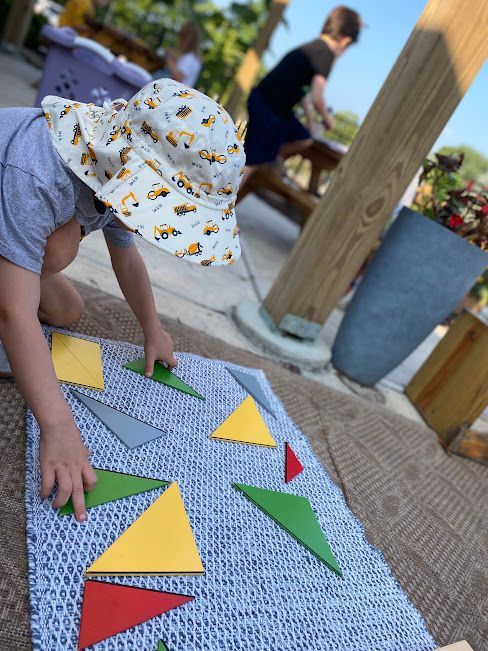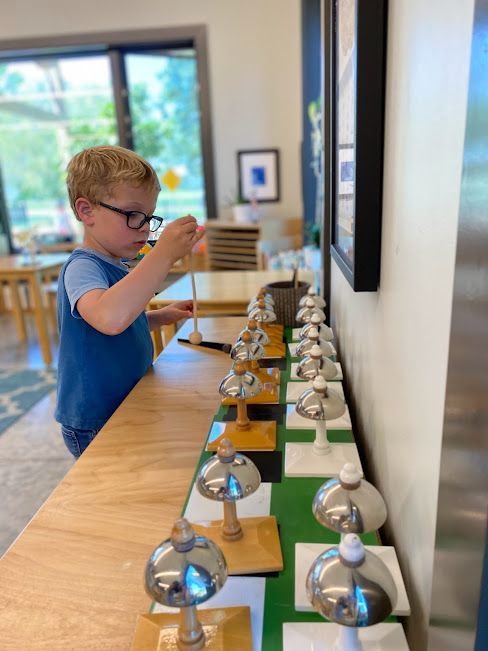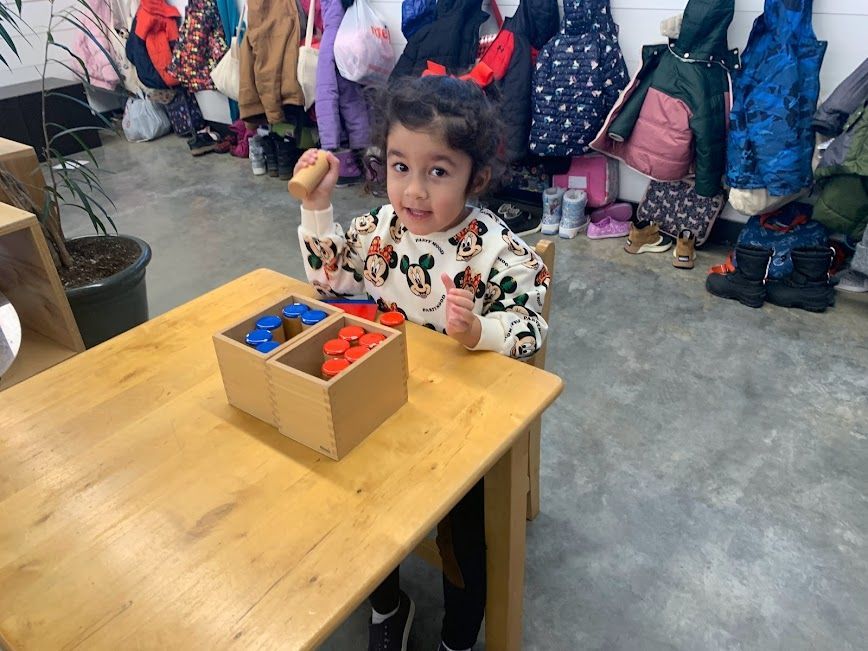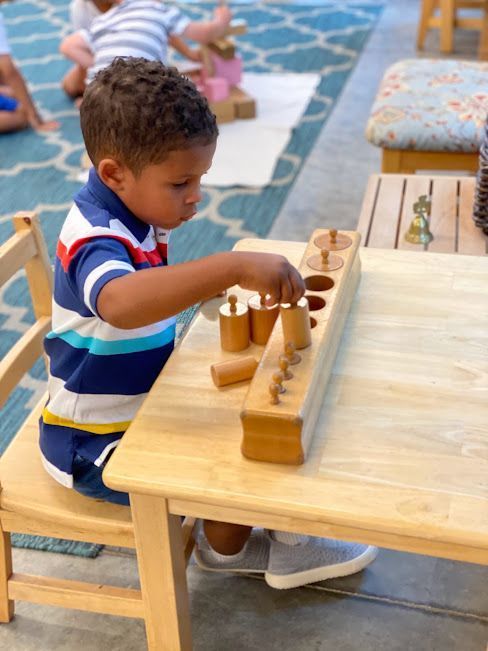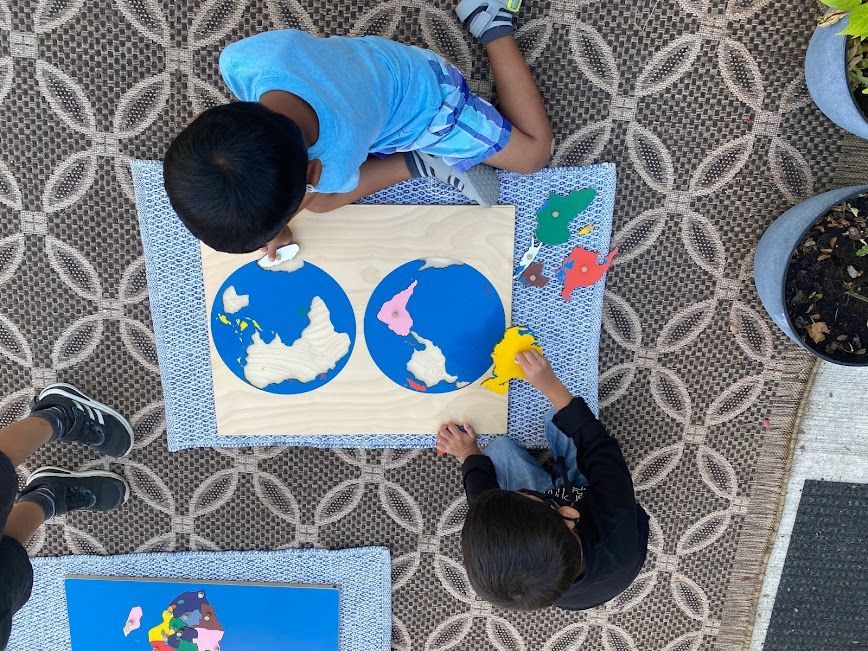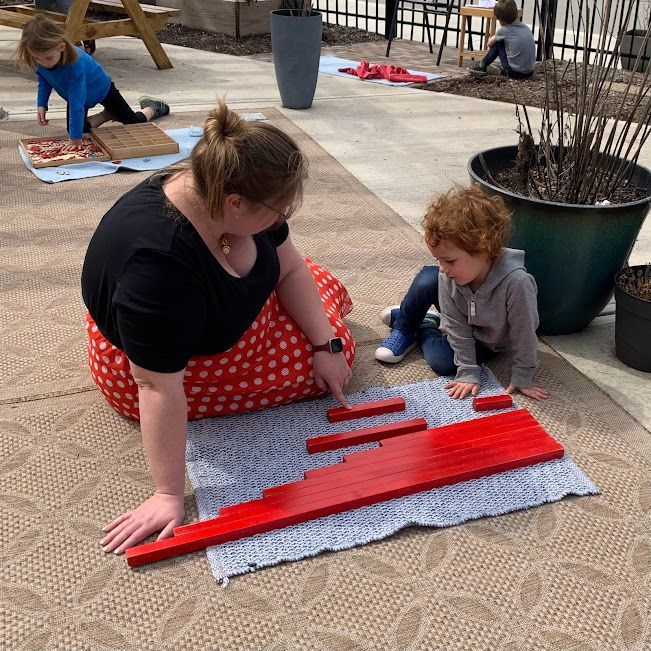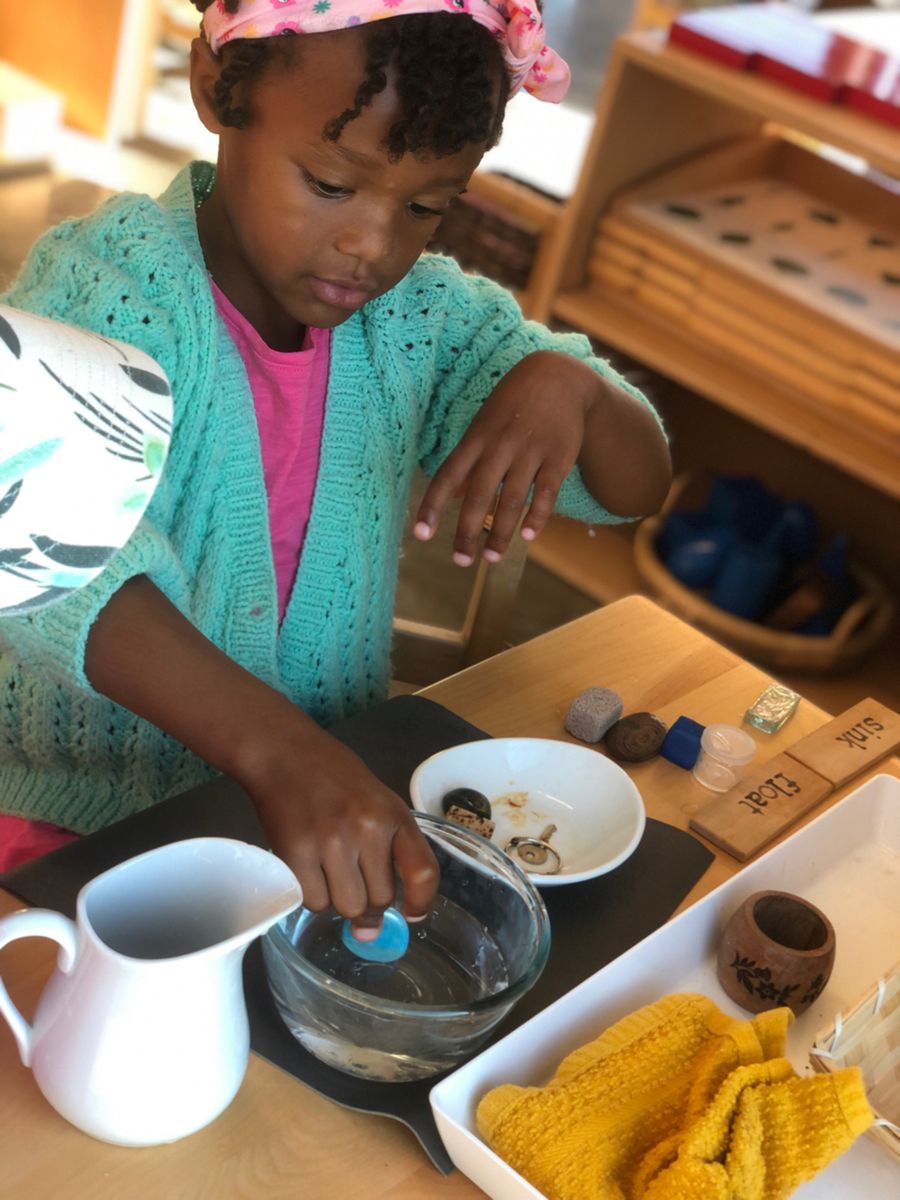"So we can agree that the isolation of the senses is a great help towards the clarity of reception of the impressions. If we wish to be of help to children, we must help them achieve something which they cannot achieve by themselves, such as the theory of colour, or the three dimensions of the relativity of heat."
DR. MARIA MONTESSORI
The Sensorial area in a primary classroom is unlike any other. The Sensorial materials are beautiful. They are often enticing a child to touch and manipulate them. These materials contain an isolation of quality and isolation of the senses. There is also a tremendous about of vocabulary enrichment within these materials. Children will discover the meaning of abstract qualities such as large and small, salty or sweet and rough and smooth. The will learn the correct names of two-dimensional shapes and the various triangles: isosceles, scalene and equilateral.
The Sensorial area of the classroom incorporates materials that develop the sense of sound, taste, smell, touch and sight. The Bells allow for exploration and fine tuning of the sense of hearing. The Tasting Bottles allow the child to isolate the sense of taste. The children learn vocabulary for sour, sweet, bitter and salty. The Smelling Jars allow for identification of various scents. Do you enjoy the smell of clove or lemon? The sense of touch is fine tuned with multiple materials. The Rough and Smooth Boards allow for discrimination within feelings of rough and smooth within the fingertips. The Thermic Bottles help identify the sense of temperature. Which bottle is cold versus cool, hot or warm? The Baric Tablets help the children discriminate weight. The sense of sight is also fine tuned with multiple materials. The iconic Pink Tower's control of error is within the child and the ability to distinguish between large and smaller, larger or the largest. Vocabulary is introduced with geometry shapes found in the Geometric Cabinet. Children can easily see the difference in the pentagon versus the ellipse.
Children also explore geography, culture and science within the Sensorial area. The Puzzle Maps allow the child to visually see the shape of each country on each continent. These countries can then be named for an added challenge. Children explore culture and people through the Geography Folders and gain a glimpse of many cultures all over the world through the photos. Various science experiments can be found on the shelves. The experiments allow for exploration and understanding of the real world and its elements.
Many of the Sensorial materials also contain extensions within the work. The child can begin to work with the World Puzzle Map at the young age of three years. They may revisit the World Map when they are older and can name the continents and are developing their cursive writing. Achieving the lesson of Map Making is a long anticipated work in the classrooms. The children excitedly exclaim to each other that they are doing Map Making!
The Sensorial area of a Montessori classroom is unique. Filled with material to enrich the senses and expand vocabulary, they are enjoyable for all children! Interested in getting a peak yourself? Come join us for a Prospective Parent Evening and take a look!

